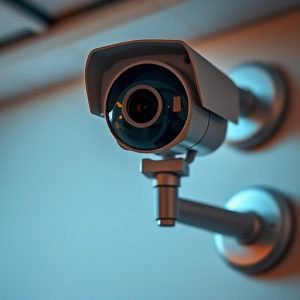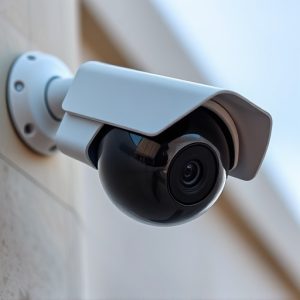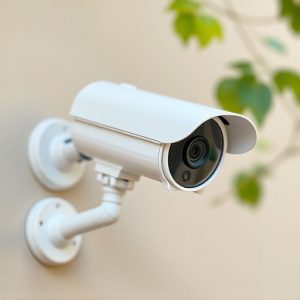Dummy Security Cameras: Mounting Height & Placement Guide for Optimal Deterrence
Dummy surveillance cameras act as powerful visual deterrents, strategically mounted (5-10 feet above…….
Dummy surveillance cameras act as powerful visual deterrents, strategically mounted (5-10 feet above ground) in visible locations like entrances, exits, and high foot traffic areas to convey constant observation. Balancing field of view needs, criminal deterrent effects, and environmental factors is crucial for optimal placement according to the Dummy Surveillance Deterrent Positioning Guide, enhancing security without disrupting natural environments while maximizing visual deterrence against evolving threats.
“Enhance your home or business security with our comprehensive Fake Security Camera Mounting Height Guide. Dummy surveillance cameras play a crucial role in deterring potential intruders, acting as a vital visual deterrent. This guide delves into the optimal mounting height, offering best practices for positioning these devices effectively. From understanding the camera’s function to avoiding common mistakes, we provide essential insights to maximize your security system’s performance. Discover the ideal placement techniques and transform your space into a safer environment.”
- Understanding the Role of Dummy Security Cameras
- Factors to Consider for Optimal Mounting Height
- Best Practices for Placement and Positioning
- Visual Deterrent Effectiveness and Common Mistakes to Avoid
Understanding the Role of Dummy Security Cameras
Dummy surveillance cameras, often referred to as fake security cameras, play a crucial role in deterring potential criminals and enhancing home or business security. These cameras are designed to look like their real counterparts but lack the technology to capture footage. Their primary function is to create the illusion of active surveillance, significantly reducing the likelihood of break-ins or criminal activity.
When strategically positioned according to a dummy security camera mounting height guide, they can act as a powerful visual deterrent. By placing these cameras at optimal heights and visible locations, property owners can send a clear message that their premises are under constant observation. This simple yet effective measure can deter would-be intruders, as criminals often seek easy targets where their actions may go unnoticed.
Factors to Consider for Optimal Mounting Height
When determining the optimal mounting height for security cameras, several factors come into play. One of the primary considerations is the camera’s field of view (FOV). The desired coverage area will dictate where the camera should be placed. For instance, a wide-angle lens might require a higher placement to capture a broader view, while a telephoto lens may work best at eye level or slightly below.
Another crucial aspect is the dummy surveillance deterrent positioning guide. This refers to the idea that cameras should be positioned in such a way as to deter potential criminals without being overtly obvious. A common recommendation is to keep the camera’s visible line of sight unobstructed and positioned where it can capture key areas, like entrances, exits, or areas with high value assets. Additionally, consider the environment—whether indoor or outdoor—as weather conditions and lighting may impact camera performance and image quality at different heights.
Best Practices for Placement and Positioning
When placing a dummy security camera, or any surveillance deterrent, it’s crucial to consider both strategic positioning and aesthetic integration. The ideal height for mounting ranges from 5 to 10 feet (1.5 to 3 meters) above ground level. This range offers a clear line of sight while remaining relatively hidden, deterring potential criminals without drawing unnecessary attention.
Positioning should prioritize areas with high foot traffic and visible entry points. Common locations include front doors, windows, parking lots, and alleyways. Mounting the dummy camera in plain sight, but not obtrusively so, can significantly enhance security while maintaining a natural environment. Regularly adjust the positioning to keep up with evolving threats and maintain the deterrent effect.
Visual Deterrent Effectiveness and Common Mistakes to Avoid
Visual Deterrence is a significant aspect of security camera placement, often referred to as the “Dummy Surveillance Deterrent Positioning Guide.” The goal is to create an appearance that surveillance is constantly happening, even when cameras might not be actively recording. This psychological factor can significantly deter potential criminals from targeting a property.
However, common mistakes in camera mounting can negate this effect. For instance, placing cameras too high or too low reduces their impact; they must be positioned at eye level to appear menacing and effective. Additionally, obstructed views due to poor positioning or inadequate coverage allow criminals to act without fear of detection. Understanding the balance between strategic placement for maximum visual deterrence and practical considerations is key to an effective security system.
A well-placed dummy security camera can significantly enhance real surveillance systems’ deterrent effect, acting as a powerful visual reminder for potential intruders. When mounting these devices, consider factors like environment, lighting, and accessibility to ensure optimal visibility. Following the guide on positioning and best practices will help maximize their effectiveness as a crucial component of your overall security strategy, making your property safer and more secure.


